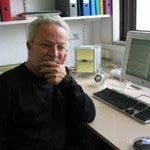Link to Pubmed [PMID] – 6605376
J. Immunol. 1983 Nov;131(5):2158-64
This study investigated the renewal patterns of T lymphocytes in mice. T cell subpopulations in the thymus, bone marrow, spleen, and lymph nodes of normal, shamthymectomized, thymectomized, and splenectomized + thymectomized BALB/c or C57BL/6 mice were identified with monoclonal antibodies to Thy-1, Lyt-1, and Lyt-2 antigens at different times after the administration of hydroxyurea in a regimen shown to deplete cycling cells. As assessed in control experiments, hydroxyurea was not toxic to noncycling lymphocytes and it had no immediate effect on the numbers of mature peripheral T lymphocytes. The injection of hydroxyurea, however, was followed by a decline of T cell numbers to approximately 50% of initial values 24 to 76 hr later, demonstrating that 50% of peripheral T lymphocytes have a short lifespan and indicating the rapid renewal of T cells at the periphery. Furthermore, differential renewal rates were observed in T cell subpopulations defined both by differentiative Lyt phenotype and spleen or lymph node localization. These findings reveal that although the majority of peripheral T cells are not in cycle, they belong to a rapidly renewing population derived after a short transition time from their dividing precursors. The relative contribution of the thymus and of post-thymic expansion to the renewal of the peripheral T cell pool was also evaluated. The results demonstrate high renewal rates in the peripheral T cell compartment, indicate that post-thymic T cells are competent to undergo considerable expansion, and suggest homeostatic mechanisms that regulate the total numbers of peripheral T cells even in thymectomized individuals.

